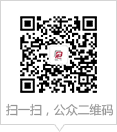互联网驱动的自有品牌服装零售——韩都衣舍
案例编号:
CN_2019XXXTYDZSW_1814
被浏览次数:
5438
案例名称:
互联网驱动的自有品牌服装零售——韩都衣舍
译名:
Online Specialty Retailer of Private Label Apparel—Handu
案例作者:
谢莉娟、毛基业、王诗桪
作者单位:
中国人民大学商学院
译者:
Xie Lijuan, Mao Jiye and Wang Shixun
案例企业:
韩都衣舍电子商务集团股份有限公司
行业:
贸易/商业
学科领域:
信息系统与电子商务、其他
规模:
大型
案例语种:
中文
案例类型:
决策型
中文关键词:
电子商务、自有品牌服装零售、C2B模式、柔性供应链、商业智能;2018百优
英文关键词:
e-Commerce, retail of private label apparel, C2B model, flexible supply chain, business intelligence
中文摘要:
本案例描述了韩都衣舍在互联网的变革中,建立以互联网驱动的自有品牌服装零售的过程。韩都衣舍于2006年成立,主要依托天猫等电子商务平台进行韩国风格的服装销售。韩都衣舍从最初的淘宝小卖家转变为中国互联网快时尚第一品牌。韩都衣舍的自有品牌服装零售的建立经历了打造自有品牌集群、围绕“爆旺平滞”算法构建C2B服装零售流程、打造柔性供应链等多个环节。本案例通过描述韩都衣舍建立自有品牌服装零售模式的过程,展示互联网时代的需求特点、零售企业的应对思路,以及与之相适应的供应链流程。
英文摘要:
This teaching case describes the business model of an Internet brand Handu in terms of its online retail of private label apparel and its evolution process. Founded in 2006, Handu mainly resorts to e-Markets like Tmall for selling clothes of South Korean style. Turning from a minor peddler on Taobao into the No.1 brand of fast fashion on the Internet in China, Handu has gone through the stages of creating a cluster of private labels, building a C2B retail model on the basis of a marketability algorithm and constructing a flexible supply chain. By describing the process of Handu’s development of a retail model of private label apparel, the case shows features of demands in the era of Internet, reactions of retailers, and the corresponding processes of supply chains.
适用对象:
本科、学术硕士、专业硕士、高管培训
编写方式:
采编
开发时间:
2017
入库时间:
2019
索要案例使用说明:
确认订购本案例:


